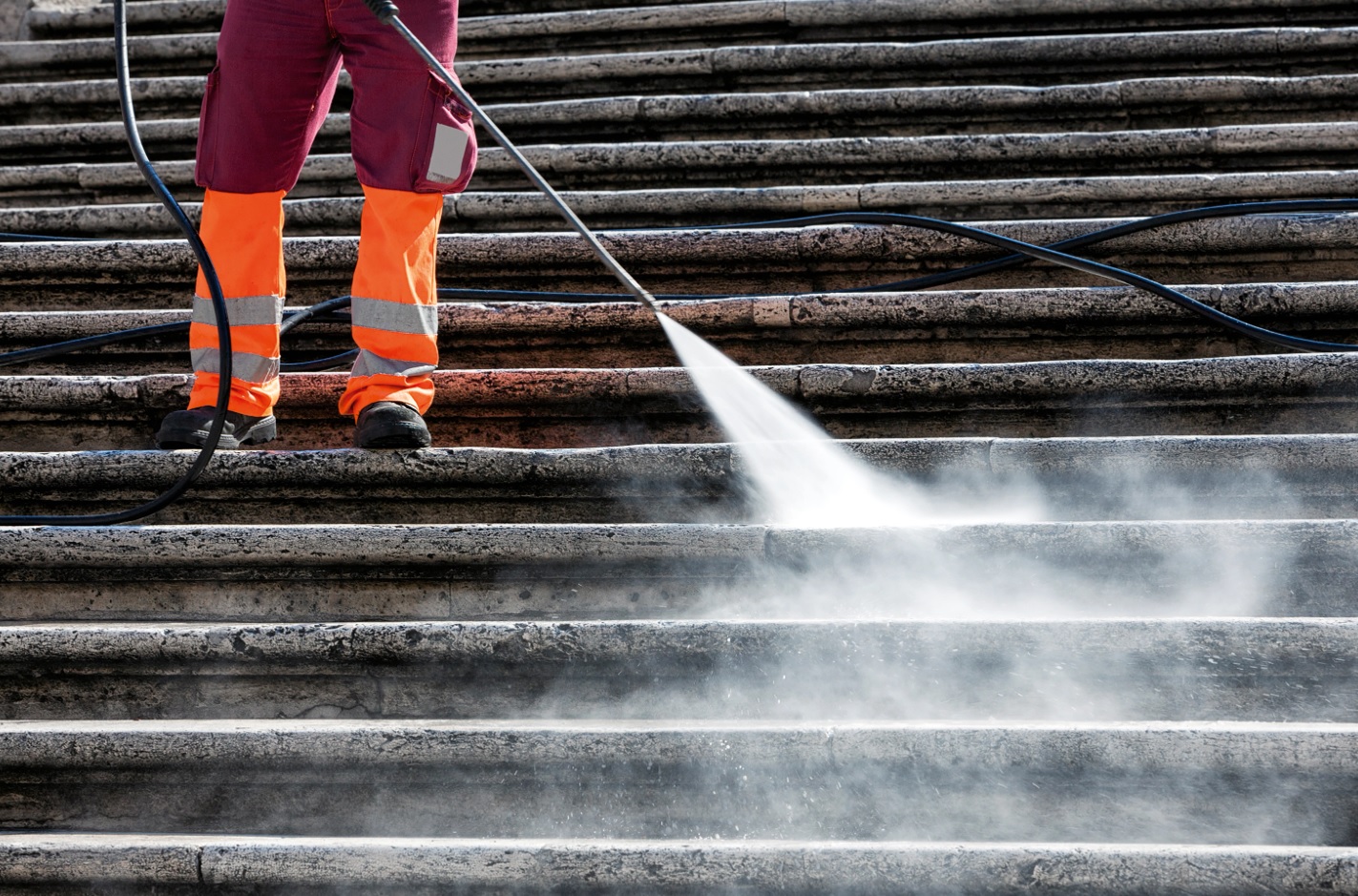
Although many cleaning contractors are experienced and conscious of the need for operator safety training, there is a lack of awareness of the need to ensure products are used safely, in spite of knowledge or experience.
A recent survey conducted by Aussie Pumps indicated many operators in the cleaning industry have not undergone any formal training and are not familiar with even the basic principles of how the high-pressure water blaster equipment works. By that, they mean the technology behind the actual high-pressure jet that gets the work done.
A basic understanding of the physics behind the machines leads to not only safer operation but, faster, more efficient cleaning and a significant decrease in a failure rate of components.
Familiarity breeds contempt
That old saying applies very much to pressure cleaning operators. Imagine an operator doing a cleaning job with a piece of equipment that is perfectly attuned to the job but involves up to five or six hours of high-pressure water blaster cleaning work. That means operating a handheld gun and lance combination for that period.
It’s tiring work! And it can be boring. It’s easy to understand how operators can become careless as fatigue sets in. Employers as well as operators need to be very conscious of the fatigue factor. Often injuries are generated not just by equipment failures but also operator ignorance and a desire to get the job finished quickly.
We’ve seen first-hand machine failures that could’ve resulted in fatalities through this factor. An example was an operator wanting to get more pressure out of a 4,000-psi machine in the expectation this would make the job faster. To crank up the pressure, the operator has to adjust the unloader valve beyond the machine’s designed pressure rating. That’s a very dangerous thing to do.
By increasing the pressure in the machine beyond the pump’s designed capability, the user is not only taking a risk with pump failure, but also with the other key components of the machine. Users often don’t realise that 90 per cent of injuries generated from pressure cleaning is related to high pressure hose and fitting failures.
Understanding how machines work
Most employers understand that a failure to maintain equipment in line with normal safety standards, or train operators so they are conscious of the need to replace faulty or leaking components, can lead to not only injury but major claims against the employer for not taking the necessary precautions.
We’ve identified cleaning contractors who use pressure cleaners in their activities every day, but still don’t understand how the machines actually work. They don’t understand the link between the orifice in the gun, the unloader setting and the pump’s capacity in its combination of both flow and pressure, to generate the right result for the cleaning job.
Labour saving devices such as turbos, flat surface cleaners, telescopic wands, and detergent foaming equipment are all very handy for use with pressure cleaners. They will cut cleaning times dramatically but, must be sized correctly for the machine they’re paired with.
It’s quite common to see a range of machines involved in a fleet of equipment. They may not only be in different capacities, in terms of horsepower, flow and pressure but also be a range of different brands. Some may be third-world machines powered by copy engines, others top quality famous name models.
The point is that the range of machines need to have the accessories that are used with them paired exactly to the machine they are going to be used with. It is common to see flat surface cleaners being used with machines they were never designed to operate with. For example, most 20” flat surface cleaners, will run 020 nozzles.
The 035-orifice size is specifically paired to a particular band of equipment. For example, the 035 nozzle with works with a 4,000 psi (280 bar) machine with a flow of 12.5 – 13 lpm. Operating that machine with an 045 nozzle, which is a larger orifice, will result in a pressure drop with consequent inefficiency of the cleaning process.
If the accessory being used with the machine is incorrect there will be an immediate loss of performance. Convenience is a major factor controlling this which is why we stress the need for education.
Training on offer
Australian Pump first started training operators with a free training course about a decade ago. Since then, there’s been an evolution of understanding of the need for training and a familiarity for operators doing professional cleaning tasks. We recently launched a new program, Aussie Safe Operator, and also offer a free operator training course with a major emphasis on product awareness.
The training program details the value of using pressure cleaners because of their indispensable labour-saving advantages. The program is all about avoiding the risks that can lead to serious injury. We welcome operators and employers to get onto the link below on their website and do the training course and get the Aussie Safe Operator certification.
It doesn’t matter what brand of machine you are using; how old it is, or what the pressure rating is. Everybody should be trained. Under the terms of the safety standards, operators of Class B machines are required to be trained by a Registered Training Organisation. For operators of Class A machines, Aussie’s free training program is something all operators can take advantage of.
The above story has been contributed by Australian Pump Industries for the benefit of operators and employers using high pressure cleaning equipment. g.
Warwick Lorenz is owner of Australian Pump Industries www.aussiepumps.com.au
Comment below to have your say on this story.
If you have a news story or tip-off, get in touch at info@incleanmag.co.nz.
Sign up to INCLEAN NZ’s newsletter.